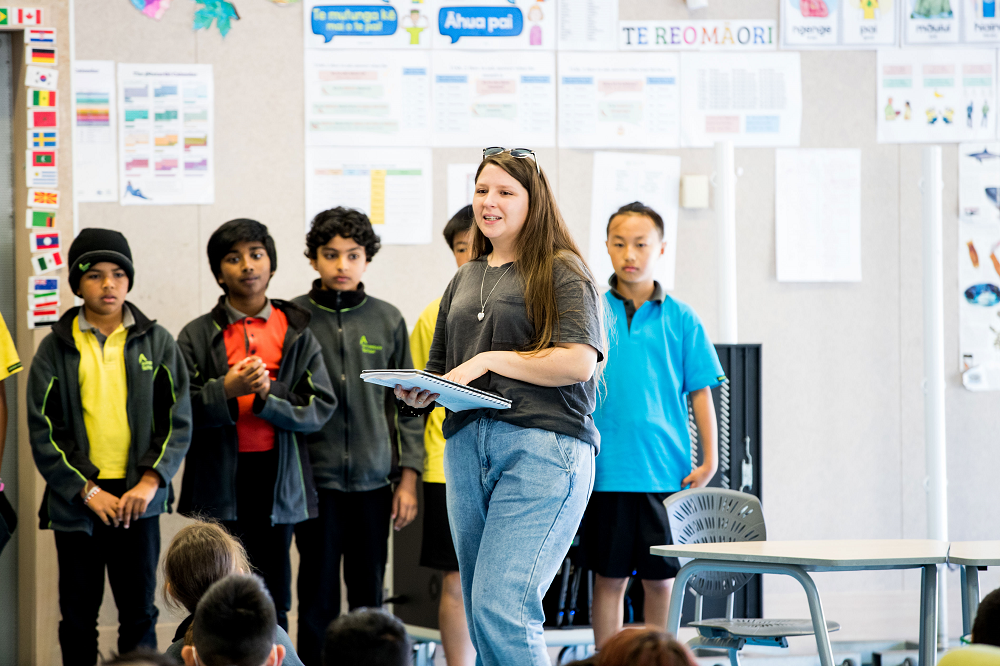ANZH purpose and content overview
On this page you will find the purpose statement for the Aotearoa New Zealand’s histories along with the Understand, Know, Do (UKD) content structure.

About this resource
Me tiro whakamuri, kia anga whakamua.
If we want to shape Aotearoa New Zealand’s future, start with our past.
Learn more about the purpose and content structure of Aotearoa New Zealand’s Histories.
Aotearoa New Zealand’s histories purpose and content overview
- Purpose overview
- Content overview
Understand: Big ideas
The big ideas of Aotearoa New Zealand’s Histories
"E kore au e ngaro; he kākano i ruia mai i Rangiātea."
We know who we are and where we come from; therefore, we can move forward with confidence.
For centuries, Māori have been settling, storying, and shaping (and have been shaped) by these lands and waters. Māori history forms a continuous thread, directly linking the contemporary world to the past. It is characterised by diverse experiences for individuals, hapū, and iwi within underlying and enduring cultural similarities.
"Kaua e uhia Te Tiriti o Waitangi ki te kara o Ingarangi. Engari me uhi anō ki tōu kahu Māori, ki te kahu o tēnei motu ake."
Do not drape The Treaty of Waitangi with the Union Jack of England, but rather with your Māori cloak, which is of this country.
The settlement of Aotearoa New Zealand has contributed to an increasingly diverse population, with many languages and cultures now part of its fabric. Colonisation began as part of a worldwide imperial project. It has been a complex and contested process, experienced and negotiated differently in different parts of Aotearoa New Zealand over time. Aotearoa New Zealand has also colonised parts of the Pacific.
"Ko te pipi te tuatahi, ko te kaunuku te tuarua."
People use their agency to respond to injustice.
Individuals, groups, and organisations have exerted and contested power in ways that improve the lives of people and communities and in ways that lead to exclusion, injustice, and conflict.
"Tuia i runga, tuia i raro, tuia i waho, tuia i roto, tuia te muka tāngata."
People can achieve a common goal when connected through relationships and knowledge.
People in Aotearoa New Zealand have been connected locally, nationally, and globally through voyaging, discovery, trade, aid, and creative exchanges. This has led to the adoption of new ideas and technologies, political institutions and alliances, and social movements.
Know: Contexts
National, rohe, and local contexts
This context focuses on how the past shapes who we are today: our familial links and bonds, our networks and connections, our sense of obligation, and the stories woven into our collective and diverse identities.
This context focuses on the history of authority and control, and the contests over them. At the heart of these contests, are the authorities guaranteed by Te Tiriti o Waitangi. This context also considers the history of the relationships between government agencies and the people who lived here and in the Pacific.
This context focuses on the relationships of individuals, groups, and communities with the land, water, and resources, and on the history of contests over their control, use, and protection.
This context focuses on the choices people made to meet their needs and wants, how they made a living individually and collectively, and the resulting exchanges and interconnections.
Rohe historical contexts as defined by iwi and hapū and guided by the question: What stories do local iwi and hapū share about the history of the people of this rohe? Historical contexts relevant to local communities are guided by the question, "What stories are told about the people, events, and changes that are important to this area?" Contexts that reflect the diverse histories and experiences of the peoples of Aotearoa New Zealand. Topics and stories chosen by ākonga when inquiring into the history of the rohe and local area
Do: Inquiry processes
Thinking critically about the past and interpreting stories about it.
The construction of narratives about the past is based on the ability to sequence events and changes and to identify historical relationships between them and how long ago they happened. Depending on who is telling the story, the same story can be told in different ways.
Drawing on a broad base of historical sources in varied forms provides a fuller and more layered understanding of the past. This includes paying deliberate attention to mātauranga Māori sources and approaches. When drawing evidence from sources, it is important to consider authorship and purpose and to identify voices that are missing.
Interpretations of people’s past experiences, decisions, and actions need to take account of the attitudes and values of the time and people’s predicaments and points of view. By using these interpretations and reflecting on our own values, we can make evidence-based ethical judgements about the past.


